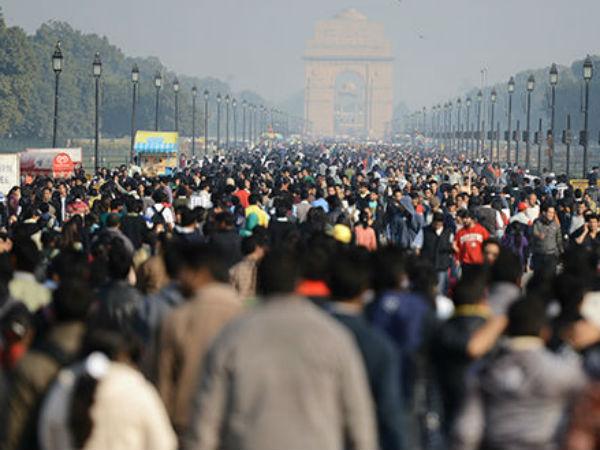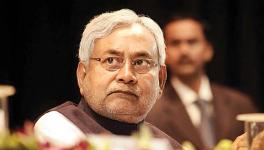Understanding Implications of UN’s Latest Population Report

Image for representational purpose. Credit: OneIndia
According to the United Nations’ World Population Prospects 2022 report, India will overtake China to become the most populous country in 2023. On 1 July next year, China’s population will touch 1.46 billion, and India’s population will increase to 1.48 billion, just 0.02 billion higher. This slight increase will make India the most populous country next year. According to this report, the world population will cross 8 billion on 15 November and 10.4 billion by 2080. The report reveals that 50% of the growth in world population by 2060 will occur in eight countries—the Democratic Republic of Congo, Egypt, Ethiopia, India, Nigeria, Pakistan, the Philippines, and the United Republic of Tanzania.
The top ten countries by population in 2022 are China, India, the United States of America, Indonesia, Pakistan, Nigeria, Brazil, Bangladesh, the Russian Federation, and Mexico. In 2050, China will slip from first to second, Indonesia from fourth to sixth, and Bangladesh from eighth to tenth position. Meanwhile, the United States of America will remain the third most populous, Pakistan fifth and Brazil seventh in 2022.
The number of people over 65 and their percentage is increasing in all countries. At 10% in 2022, this segment will increase to 16% in 2050. By then, their share will double those under five. Due to declining birth and fertility rates, in some developing countries, including India, the percentage of the population aged between 25 and 64 will be higher within populations. Each government must devise programmes to maximize the demographic dividends of this age group.
The report reveals that the COVID-19 pandemic has affected three indicators significantly: average age, birth rate, and the number of migrants going abroad. In 2019, the global average age was 72.9 years which decreased to 71 years in 2021. By 2050, the average age could increase to 77.2 years. The impact of the COVID-19 pandemic has varied around the world. The average age of the population of Central and South Asia, Latin America, and the Caribbean islands decreased by three years between 2019 and 2021, while Australia and New Zealand have increased by 1.2 years due to lower mortality rates.
In Bolivia, Botswana, Lebanon, Mexico, Oman, and the Russian Federation, the average age has dropped by four years between 2019 and 2021. The birth rate of low- and middle-income countries has remained almost stable. Birth rates throughout the world have dropped dramatically already. The COVID-19 pandemic contributed to it by limiting all forms of migration.
According to the report, the world’s population growth rate has been steadily declining since 2012. The population growth rate was 1.22% in 2012 and fell to 0.84% in 2022. Although the world population grew at less than 1% in the last decade, it has risen from 7 to 8 billion in the shortest period (11 years). The report says the subsequent one billion increase will occur in 2038, 16 years from now. After that, the world’s population will begin to decline.
According to the report, China will remain the world’s most populous country for another year, after which India will move up from second to first rank. It is not a matter of pride to be the most populous nation but a matter of great concern as resources do not increase in proportion to the population growth. Our country’s population will reach 1.48 billion in 2023 and surpass that of China, while China’s population, on the other hand, will start declining at the top with 1.46 billion people. India’s population will start falling after reaching 1.69 billion by 2064. By the end of the century, India’s population will shrink to 1.53 billion and China’s to 0.77 billion, less than half of India’s population.
How and why could China control its population and why has India lagged needs a glance. The population of China in 1950 was 540 million, and India in 1951 was 361 million. At that time, the fertility rate in India was 5.9, and China’s fertility rate was 6.11. China’s population and fertility rate were higher than India’s in the 1950s. The government of India started the National Programme for Family Planning in 1952 to control the population, but China had not implemented any programme to control the population at that time.
With rapid population growth, China launched a population control programme in the 1970s under the slogan Late, Long, and Few, which reduced the fertility rate from 6.11 to 4.85 from 1970 to 1976. But even with this reduced fertility rate, China’s population was increasing, which was very important for the Chinese government to control. As a result, the Chinese government strictly implemented the ‘One Child Policy’ in 1979. Although the policy was largely criticized around the world, China overcame population growth during the period between 1979 to 2015. In 2015, this scheme was ended, allowing people to have two children and in 2021, three children.
After implementation of the ‘One Child Policy, China’s fertility rate dropped to 2.52 in 1985, and 15 years later, in 2000, China’s fertility rate dropped below the replacement ratio (2.1) to 2.0. On the other hand, India, which started planning under the National Programme for Family Planning to control the population in 1952, 27 years before China’s ‘One Child Policy (1979), achieved the replacement ratio in 2000. India’s fertility rate was 2.0, 21 years later than China. Five Indian states, Bihar (3.0), Meghalaya (2.9), Uttar Pradesh (2.7), Jharkhand (2.4), and Manipur (2.2), have fertility rates above the replacement ratio in 2021 as well.
Apart from the government’s National Programme for Family Planning, the reason for the declining fertility rate in India is also people’s perception of small families. Although no One-Child Policy has been drawn up and imposed in India like China, the National Family Health Survey-5 has revealed that the fertility rate in the country’s 29 states and union territories ranges between 1.1 to 1.9. This is a positive aspect of the Government of India in controlling population growth. To curb India’s population growth, the Government of India must ensure public health services, female literacy, and employment.
Increase in public health services will reduce infant and maternal mortality rates. According to the National Family Health Survey-5, still 11 per cent of children are being delivered at home and 24 per cent of children are deprived of vaccinations. Although reduction of fertility rate is an important aspect to control population growth, at the same time, infant mortality also affects population growth. If a child dies early, it will affect both the fertility and birth rates, which will both increase because the parents will always be afraid of being childless. For the balanced development of children, their diet should be rich in nutrients. In India, 36 per cent of children are underdeveloped due to the lack of nutrients in their diet. Case in point, about 67 per cent of the country’s children are anaemic.
Out of the states in India with higher fertility rates than the replacement ratio, three states: Bihar, Jharkhand, and Uttar Pradesh, have very low female literacy rates. Bihar has 49.5 per cent, Jharkhand 44.5 per cent and Uttar Pradesh 42.8% illiterate women. There is a direct correlation between fertility rate and literacy rate. In states where the literacy rate of women, in particular, is high, both birth and fertility rates are low. Therefore, the government should ensure the education and employment of girls to control population growth.
The report concluded that the percentage of the population aged between 25 to 64 would be higher in developing countries. In India too, the percentage of the population in this age group is higher than the other two categories, viz less than 25 years, and above 64 years. The government should provide maximum employment opportunities for this section of the population. Lakhs of educated youth migrate abroad yearly due to a lack of employment opportunities in the country. This international migration is resulting in brain drain, capital drain, and loss of demographic dividend. China has made such an arrangement in the country that almost every citizen gets employment according to their ability. China took full advantage of its large population to achieve a high rate of economic growth of the country. Our government should also take full advantage of this category (25-64 years) to increase the economic development of the country by employing them according to their ability.
To check the population growth, the government should implement the National Programme for Family Planning seriously. There is no need for the Indian government to strictly implement the ‘One Child Policy’ like China but provide guaranteed education and employment to its people. Proper implementation of family planning programmes is an important indicator of economic development. With the benefits of economic growth, people become aware and voluntarily reduce their family size keeping in mind the needs and facilities of the members of the family. The government should make people aware of the benefits of small families, and provide quality employment, free education for children, and medical assistance as well as scholarships for small families. A pro-people and nature-friendly economic development path.
The author is former professor, Department of Geography, Punjabi University, Patiala. The views are personal.
Get the latest reports & analysis with people's perspective on Protests, movements & deep analytical videos, discussions of the current affairs in your Telegram app. Subscribe to NewsClick's Telegram channel & get Real-Time updates on stories, as they get published on our website.
























